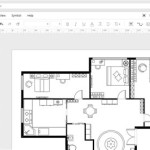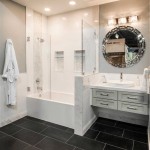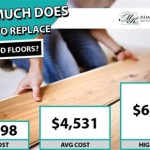Problems With Engineered Hardwood Flooring
Engineered hardwood flooring has become a popular alternative to solid hardwood, offering a balance of aesthetics, durability, and cost-effectiveness. It consists of a thin layer of real hardwood veneer bonded to a core of plywood or high-density fiberboard (HDF). While engineered hardwood boasts numerous advantages, it is not without its drawbacks. Understanding these potential issues is crucial for homeowners and contractors making informed decisions about flooring options.
Vulnerability to Moisture
One of the primary concerns with engineered hardwood is its susceptibility to moisture damage. Although the core layers often provide some degree of moisture resistance compared to solid hardwood, prolonged exposure to water or high humidity can lead to a range of problems. The veneer layer, being real wood, can absorb moisture, causing it to swell, warp, or delaminate from the core. This is particularly problematic in areas prone to spills, such as kitchens and bathrooms, or in basements where humidity levels tend to be high. Leaks from appliances, plumbing issues, and even excessive condensation can all contribute to moisture-related damage.
The type of core material also plays a significant role in the moisture resistance of engineered hardwood. Plywood cores generally offer better protection against moisture than HDF cores. HDF is denser and more stable than particleboard, but it can still absorb moisture if not properly sealed and protected. Once moisture penetrates the core, it can cause swelling, weakening the structural integrity of the flooring and potentially leading to buckling or uneven surfaces. Maintaining proper humidity levels in the home and promptly addressing any leaks or spills is essential to mitigate the risk of moisture damage.
Furthermore, the installation method can impact the flooring's vulnerability to moisture. Floating installations, where the planks are connected to each other but not directly to the subfloor, can be more susceptible to moisture problems than glue-down installations. Water can seep beneath the floating floor, becoming trapped and promoting mold growth. Glue-down installations provide a more secure barrier against moisture penetration, but the adhesive used must be specifically designed for hardwood flooring to prevent future issues.
Limited Refinishing Options
Another significant limitation of engineered hardwood is its limited refinishing potential. Unlike solid hardwood, which can be sanded and refinished multiple times, engineered hardwood can only be refinished a few times, or sometimes not at all, depending on the thickness of the veneer layer. The veneer is the visible layer of real wood, and when it becomes scratched, dented, or worn, refinishing involves sanding down the surface to reveal a fresh layer of wood. If the veneer is too thin, sanding can easily expose the core material, rendering the flooring irreparable.
The thickness of the veneer layer is a crucial factor to consider when selecting engineered hardwood flooring. Veneers range from as thin as 0.6mm to as thick as 6mm or more. Thicker veneers provide more refinishing opportunities and can withstand more wear and tear. However, thicker veneers also tend to be more expensive. Before investing in engineered hardwood, homeowners should carefully assess their lifestyle and anticipated traffic levels to determine the appropriate veneer thickness. Homes with children or pets may benefit from a thicker veneer to withstand more activity and potential damage.
Even if the veneer is thick enough for refinishing, the process can be challenging and requires specialized equipment and expertise. Sanding engineered hardwood too aggressively can quickly damage the veneer and expose the core. It's crucial to hire a professional flooring contractor with experience refinishing engineered hardwood to ensure that the job is done correctly. Furthermore, the type of finish used can also affect the refinishing process. Some finishes are more difficult to sand and refinish than others, so it's essential to choose a finish that is compatible with the veneer and the desired level of refinishing potential.
Potential for Delamination and Gapping
Delamination and gapping are common problems associated with engineered hardwood flooring. Delamination refers to the separation of the veneer layer from the core, while gapping occurs when gaps form between the planks. Both issues can detract from the appearance of the flooring and compromise its structural integrity.
Delamination can be caused by several factors, including moisture exposure, poor manufacturing quality, and improper installation. As previously mentioned, moisture can weaken the adhesive bond between the veneer and the core, leading to separation. Engineered hardwood manufactured with low-quality adhesives or substandard construction techniques is also more prone to delamination. Improper installation, such as failing to acclimate the flooring properly before installation or using the wrong type of adhesive, can also contribute to delamination.
Gapping is often caused by fluctuations in humidity levels. Wood expands in high humidity and contracts in low humidity. These changes can cause the planks to shift and create gaps, especially in floating installations. Wide planks or long runs of flooring are particularly susceptible to gapping because they have more surface area to expand and contract. Using a humidifier during the winter months and a dehumidifier during the summer months can help to minimize humidity fluctuations and reduce the risk of gapping. Proper acclimation of the flooring before installation is also crucial to ensure that the wood is at its equilibrium moisture content with the environment.
In addition to humidity fluctuations, improper installation can also contribute to gapping. Failing to leave adequate expansion gaps around the perimeter of the room can restrict the flooring's ability to expand and contract, leading to gaps between the planks. Using the wrong type of fasteners or failing to properly secure the planks can also cause gapping. Addressing delamination and gapping often requires professional repair or even replacement of the affected planks. Preventing these issues through proper installation, moisture control, and selecting high-quality flooring is crucial for the longevity of engineered hardwood flooring.
Furthermore, the underlying subfloor plays a significant role in the stability and performance of engineered hardwood. An uneven or unstable subfloor can cause undue stress on the flooring, increasing the risk of delamination and gapping. Before installing engineered hardwood, it's essential to ensure that the subfloor is level, clean, and dry. Any imperfections or irregularities in the subfloor should be addressed before installation to provide a solid and stable foundation for the flooring.
The choice of underlayment used beneath engineered hardwood can also impact its performance. Underlayment provides a cushioning layer that helps to reduce noise, improve insulation, and provide additional moisture protection. Selecting the appropriate underlayment for the specific type of engineered hardwood and the intended application is essential. Some underlayments are designed to provide enhanced moisture resistance, while others are better suited for reducing impact noise. Consulting with a flooring professional can help homeowners choose the right underlayment for their needs.

Engineered Hardwood Flooring Installation Errors And How To Avoid Them Reallycheapfloors America S Cheapest

10 Major Disadvantages Of Installing Engineered Wood Flooring A Floor Guide Reallycheapfloors America S Cheapest Hardwood

Engineered Enigmas Know These Answers To Avoid Problems Wood Floor Business

What Are The Causes Of Delaminating Issues Engineered Flooring Guolian Floor

Wood Flooring Problems Moisture Related Floor Central

Hardwood Flooring Moisture Problems And Warning Signs Ambience

11 Wood Flooring Problems And Their Solutions Fine Homebuilding
Problems Causes And Cures

Problems With Hardwood Flooring Moisture Damage Ambience
Engineered Flooring Problems Archives Petra Renovation Inc








